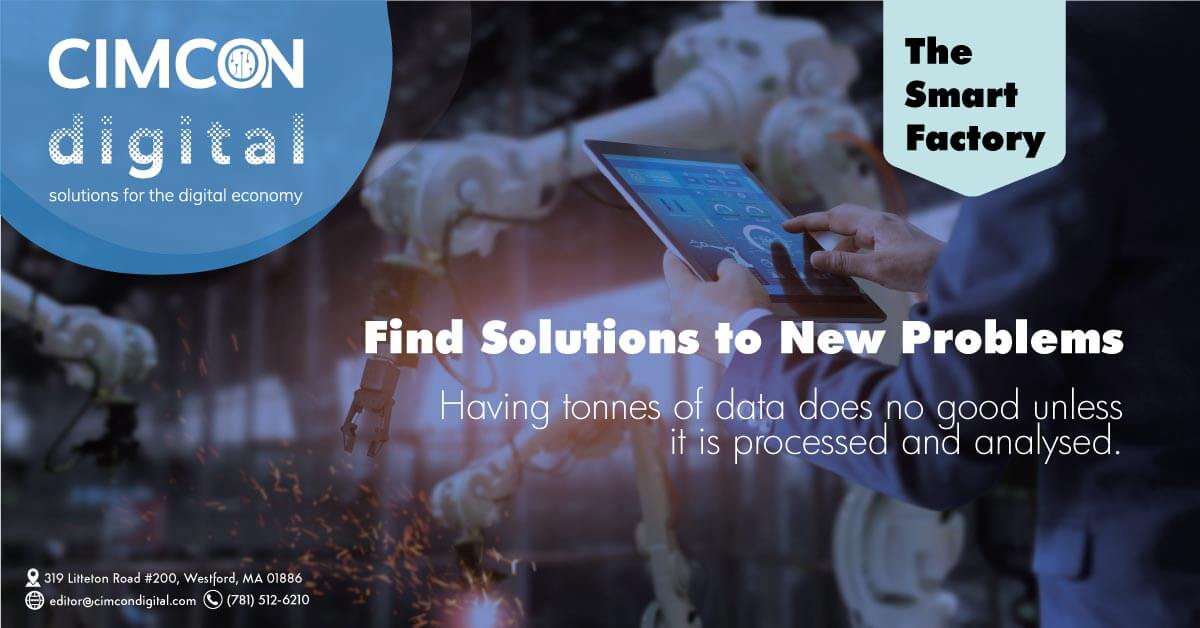What is a Smart Factory?
A Smart factory uses technology to automatically share information digitally across the operation, including data from materials, people, and machines. Smart manufacturing relies on an integrated system consisting of simulation technologies, connected equipment, and collaboration tools.
There is no single technology that turns an analog factory into a Smart factory. However, there are many common technologies and traits that Smart factories share, and manufacturers that blend multiple technologies are the ones most likely to be considered “Smart factories.”
What are the benefits of a Smart Factory?
One of the most obvious benefits of a Smart factory is a major boost to efficiency. By removing inefficient human decision-making processes that can be not only slow, but also biased or simply incorrect, factories can produce more with less – less time, less material resources, fewer breakdowns, and scrap parts, etc.
Although many manufacturing employees worry that the influx of automation and other Smart technologies will put them out of the job, Smart manufacturing opens up opportunities for more, new, higher paying jobs that many people find more engaging and fulfilling. These highe rpaying jobs also attract young, new talent to the field with new insights and concepts to better the facility.
In the same context, Smart factories are breeding grounds for innovation. Because of the agility filled into the system by way of real-time analytics, there is more room to experiment, be creative, find solutions to new problems within the market, and test ideas at scale without spending unnecessary resources. Smart factories even see an uptick in customer satisfaction, because costs can go down, shipping times can go down, all the while quality and consistency go up.
Technology in a Smart Factory includes:
Industrial Internet of Things (IIoT)
This consists of small sensors and other hardware that are connected and communicate with one another. They might be used for asset management, energy reduction and lighting, or machine data collection, although there is a nearly unlimited number of use cases for IIoT in manufacturing.
Edge Computing Technology
Edge computing takes data coming from the factory floor and processes it close by, removing the wait time it can take to upload to the cloud, analyse, and redistribute info to the factory floor. Edge computing enables real-time analytics and ultra-fast decision-making using data, and is perfect for safety mechanisms, predictive maintenance, and similarly time-sensitive computing tasks.
Predictive Analytics and Machine Learning
In regards to manufacturing, as well as other businesses, machine learning and predictive analytics are one such use case for the collected data mentioned above. Data can be combined and used to fuel machine learning models that offer decision making insights from sets of information that can be too complex for humans to derive value from alone. Machine learning and predictive analytics can be
used to forecast demand, perform predictive and prescriptive maintenance on machines, spot openings and opportunities in the market, and much, much more. This is a very powerful feature of a Smart factory.
Automation
With smart, connected machines comes the opportunity for humans to step outside of the circle, and allow automation to step in. In many cases, machines are better able to handle tasks faster and more accurately than their human counterparts. Industrial automation releases these humans to focus on other complex cognitive tasks that are better suited for human minds than machine minds.
Big Data
When IIoT devices collect data, it has to go somewhere. Same for other data that manufacturers commonly collect like customer data, production data, supplier data, etc. Big data simply refers to these massive stores of information that manufacturers can pull from as well as ways to sort and manage this information for use with other tools and analytics software.
What else do Smart factories have in common?
Paperless: Because processes are digitised, there is no need for paper in a Smart factory. Everything is stored on the cloud or locally, in Smart format.
Real-Time Metrics: To operate with the type of efficiency expected from a Smart factory, manufacturers must have access to real-time metrics that let them adjust on the fly to ensure production goals and other company creativities are continuing to be met – no surprises.
Big Data Analytics: Having tonnes of data does no good unless it is processed and analysed. This type of analysis helps Smart factories make more informed decisions that are based on the numbers,
allowing them to spot trends, opportunities, problems, and areas to increase efficiencies.
Linked Stack: As mentioned, it’s less about having one technology or another, and more about having a system of integrated technologies. This can include PLC info from the floor, merged with ERP data, merged with MES and SCADA data, etc. This exchange of information between
machines allows for quick, data-driven, machine-led decision making at all levels of the manufacturing process.



Leave a Reply